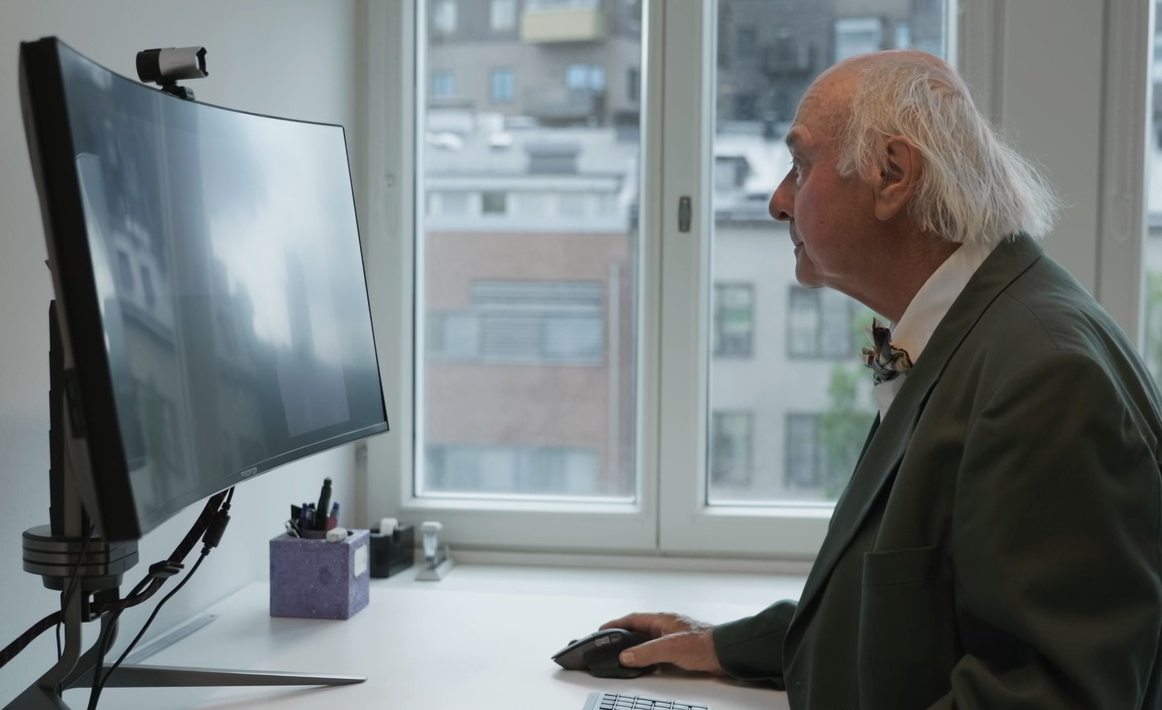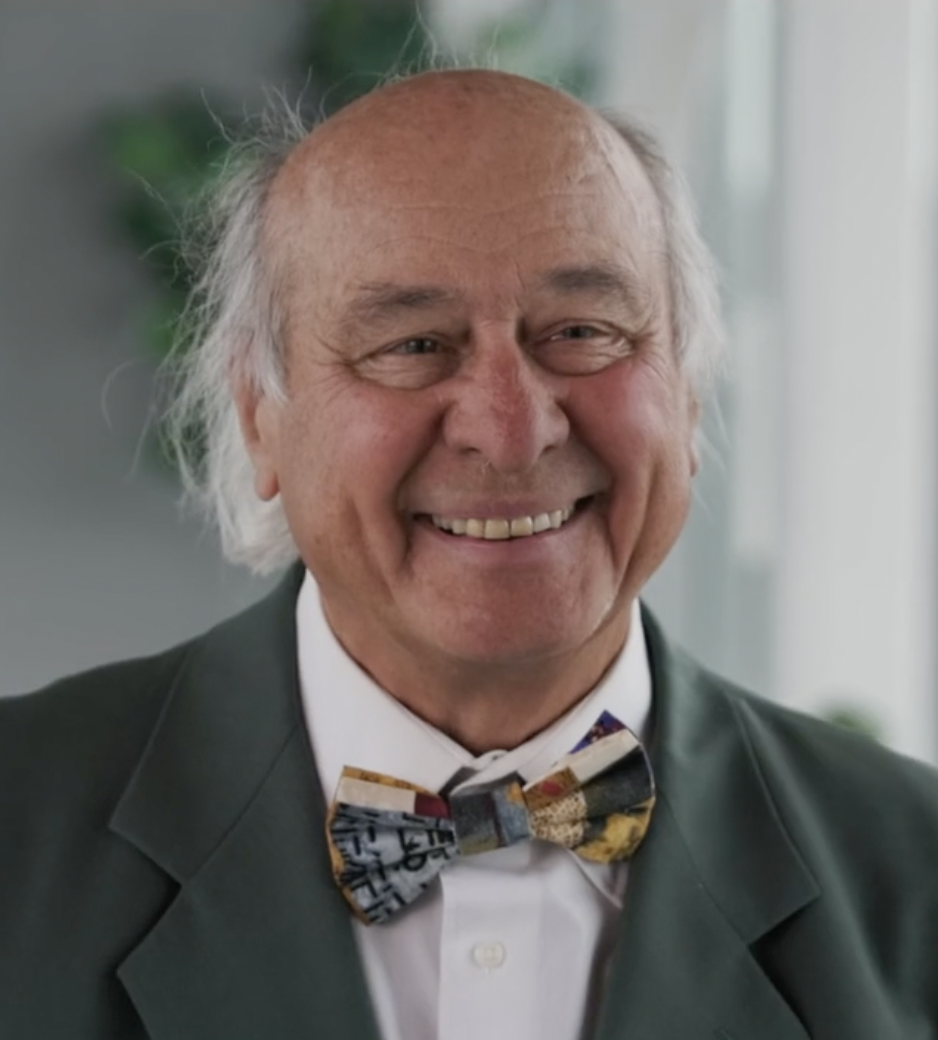Benefits for cancer patients
“Theranostics have incredible potential: very precise treatment that can be used all over the body with almost no side effects... and it is in some cases less expensive than other methods because you usually do just one treatment. It is the future of nuclear medicine.”
“An advantage of nuclear medicine, for example, is when we find a breast cancer. The patient has a little lump in one of her breasts but we don’t do any more surgery right away, we must see if the cancer has spread to the nearby lymph nodes, this is the first place a cancer might spread.
The procedure
What we do on every patient who has breast cancer is to inject close to the lump a little dose of radiotracer into the tissue bed. The lymphatic system drains this tracer into the nearby lymph nodes, referred to as the ‘sentinel nodes’, and the surgical team use a radiation detector to locate these nodes and remove them. A pathologist then looks at the nodes to establish whether the cancer has spread there. If no cancer is present in the sentinel lymph nodes, the surgeon will remove only the lump, leaving as much other tissue as possible untouched.”
“Imagine the benefits for the patient. [They] don’t need to be hospitalized and it cuts the cost of a patient because extensive surgery is very costly and time-consuming.”
It’s very painful for the patient to have a breast and possibly nearby lymph nodes removed and there could be complication after the type of surgery called lymphedema. This is where excess fluid builds up in the body’s soft tissues as they can no longer drain away into the missing lymph nodes. The fluid buildup causes swelling and pain. Patients don’t need to be hospitalized and it cuts the cost of a patient because extensive surgery is very costly and time-consuming.
Skin cancer
We now do the same thing for melanoma, a skin cancer. These are some of the great improvements that nuclear medicine provides to the patient. Nuclear medicine is worldwide now and very well-known, so you can see now why we need new technologies, new types of equipment, more doctors and nuclear medicine technologists. We have a big challenge because these types of cancer are so frequent.”

The role of innovation
“What must continue improving to keep pace with the rapid development of nuclear medicine is the quality of detectors, as well as the software which handles the data. More companies are developing whole body detectors, these systems produce huge volumes of data, requiring advanced software to display and analyze the images efficiently. The necessary software development expertise is often not present at these companies, this is the perfect niche for vendor-neutral solutions to plug the gap.
Benefits of vendor-neutral software
I must have the liberty to choose the type of equipment I need without changing the software all the time, so I don’t have to train all the staff and myself all over again. With vendor-neutral software, you are free to choose the kind of detector that suits your department’s needs best and it’s much less expensive for the government because they don’t have to pay for new software for each new detector.
Hermes Medical Solutions understands this, continually innovating and updating existing software, working directly with the people using the software every day in hospitals. They employ many clinical nuclear medicine specialists to work in the applications team alongside R&D; technologists and clinical scientists to provide expert knowledge and experience. Hermes Medical Solutions is fantastic in this field.”
Partnership with Hermes Medical Solutions
“They keep in very close contact. When you buy Hermes Medical Solutions, you’re not just buying a system. You are creating a partnership. The feeling I have when I deal with Hermes Medical Solutions, is like if they were part of my department. It is easy to get access to them. They always help us, and they understand very rapidly the problem and honestly, they are a part of the department. It’s a real partnership that we need and most of our residents are trained on the Hermes Medical Solutions platform."

"In Québec, that’s around 95% of our department. They use the Hermes Medical Solutions software because it’s reliable, easy to use, and they keep continuously evolving to make sure that they answer the demands of the users. And the one who benefits most from it is the patient."
“When you buy Hermes Medical Solutions, you’re not just buying a system. You are creating a partnership.”
"We need a tool that we can use very easily, and Hermes Medical Solutions do this so perfectly. The evolution of nuclear medicine will bring with it the obligation, and pleasure, of more partnership with the people who develop the software.”
 r. François Lamoureux is an associate professor at the Department of Nuclear Medicine, Radiology and Radiotherapy at the Faculty of Medicine of the University of Montréal, and current president of the Canadian Association of Nuclear Medicine. He has worked for several decades in the field, applying his experience and knowledge to further the accuracy of diagnosis, and reaching major milestones in the development of nuclear medicine.
r. François Lamoureux is an associate professor at the Department of Nuclear Medicine, Radiology and Radiotherapy at the Faculty of Medicine of the University of Montréal, and current president of the Canadian Association of Nuclear Medicine. He has worked for several decades in the field, applying his experience and knowledge to further the accuracy of diagnosis, and reaching major milestones in the development of nuclear medicine.






